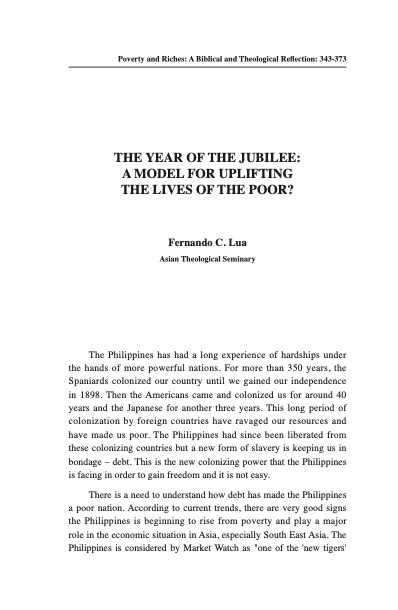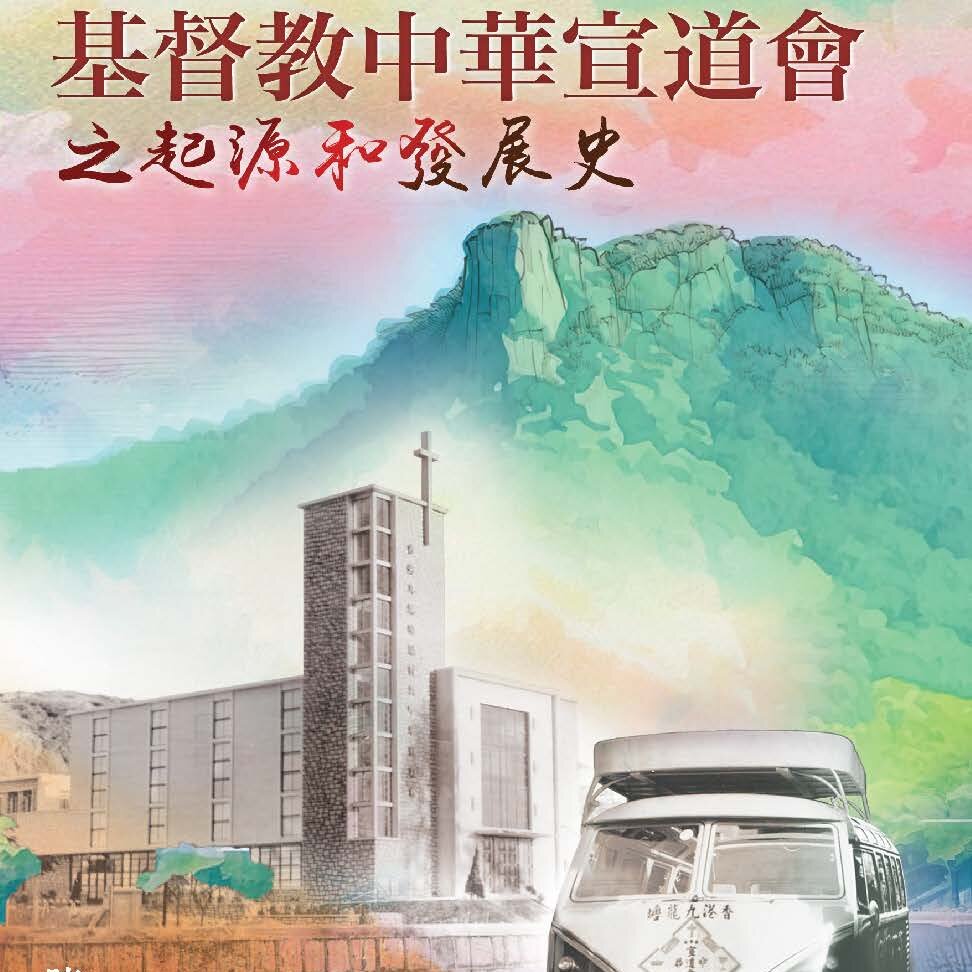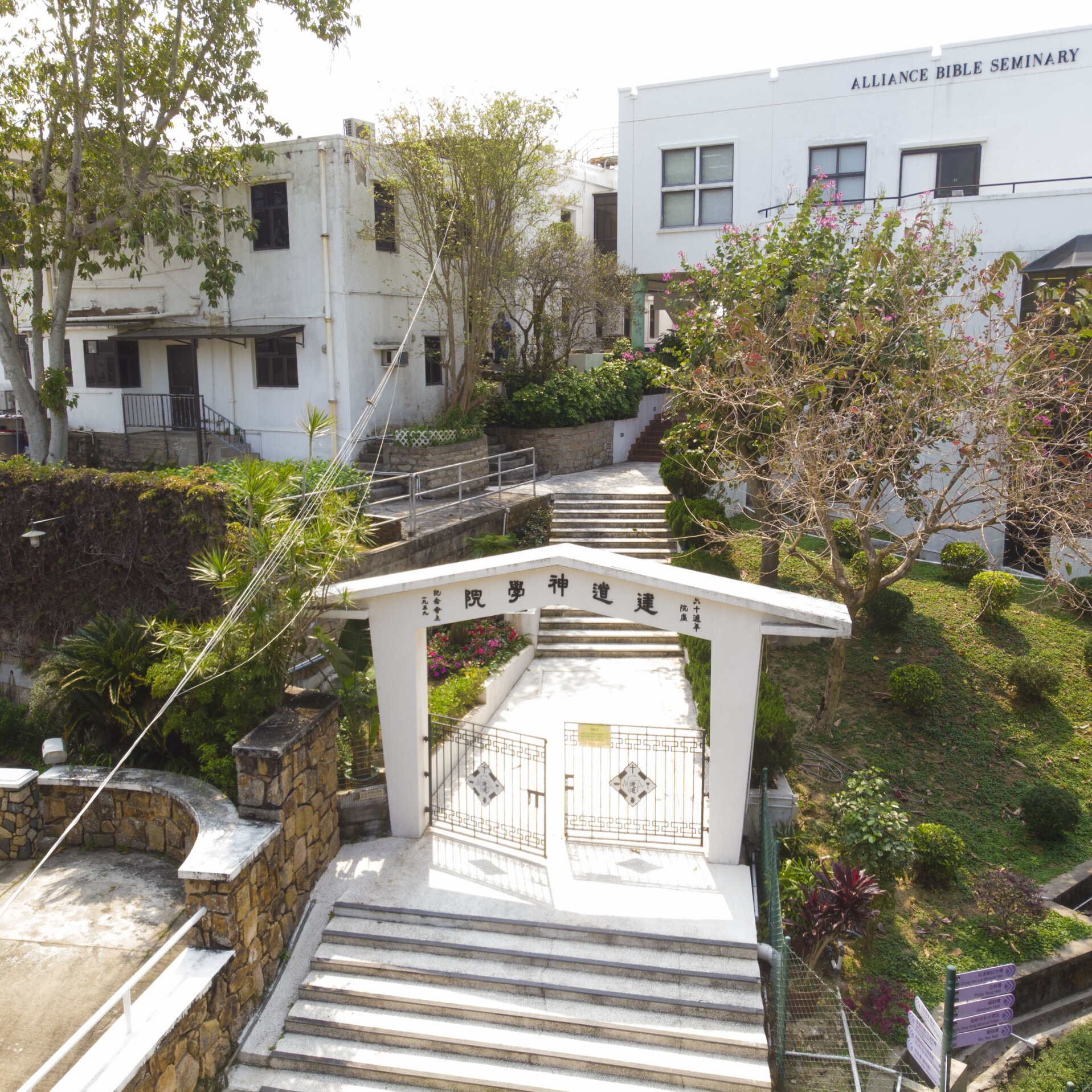THE YEAR OF THE JUBILEE: A Model for Uplifting the Lives of the Poor?/Fernando C. Lua
Fernando C. Lua Associate Professor and Vice-President for Administration and Finance, Asian Theological Seminary, Philippines.
ABSTRACT
Every year the gap between the rich and the poor is getting bigger. The Philippines, despite its good economic performance the past years, remain heavily indebted. This is the major reason why the Philippines cannot rise out of poverty.
The biblical model of the Jubilee gives us hope though. Following the Jubilee mandate of cancellation of debt and returning of land to the poor will help solve the problem of poverty in the Philippines. If even a partial amount of their loans will be cancelled under the Jubilee mandate, it will help solve the problem of poverty as more money will go to much needed services such as education and health.
Our vision is for a biblical model of community where there will be no more poor people. This is the reason for the Sabbath, the Sabbath Year mandate, and the Jubilee Mandate. Jesus came not just to preach the good news to the poor but also to liberate those who are oppressed, oppressed politically, socioeconomically, and religiously (Lk 4:18-19).
撮要
每年世界各地的貧富懸殊情況不斷加劇,以菲律賓為例,即使過去幾年她 的經濟表現良好,可是她仍處於嚴重欠債的危機中,而這正是菲律賓無法脫貧 的主要原因。
聖經的禧年模式讓我們有所盼望。根據禧年的原則,窮人的債項獲撇清,土地歸還給他們,這方法有助解決菲律賓的貧窮問題。即使她的部分債務按禧年的規定被免除,她也可以投放較多資金於教育和醫療上,以助解決貧窮的問題。
我們期盼一個合乎聖經原則的社羣,當中沒有貧窮人。這正是安息日、安息年和禧年的意義。耶穌來不但要傳福音給貧窮人,也要讓受壓制的得自由,無論是受政治、社會經濟或宗教上的壓迫(路四18∼19)。
原載於《建道學刊》41期(2014年1月),頁343-373。
Latest Articles
新手牧者研究計劃(三):新手牧者的身心靈狀態 / 盧慧儀
2025 年 11 月 19 日
個體與關係:滕近輝思想中「深化」的靈性觀 / 倪步曉
2025 年 11 月 18 日
香港九龍塘基督教中華宣道會之起源和發展史/陳智衡
2025 年 10 月 20 日
Highlights
[電子書]困境與抉擇:「建道研究中心30週年誌慶」跨學科研討會論文集/廖炳堂、倪步曉主編
2025 年 1 月 2 日
從梧州到長洲:建道神學院125年的挑戰與恩典 / 陳智衡
2023 年 10 月 1 日
微小教會的見證/高銘謙
2023 年 6 月 1 日







